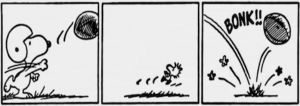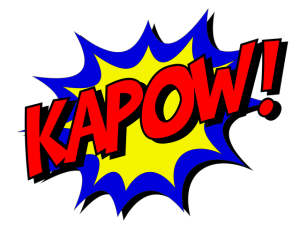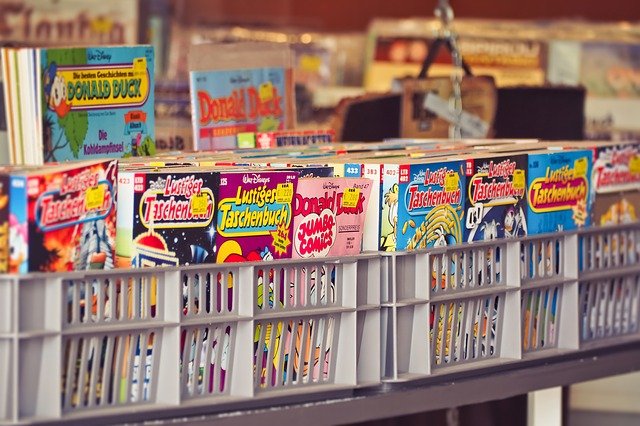Introduction.
For Comic Book Day you will be carried along into the fantasy world of the COMIC. Save and print out a copy of everything you create for your Comic Book Day portfolio.
DO – Cover Page.
Create your Comic Book Day cover page!
Session 1 – Reading Comics.
LOOK – What are comics?
Comics are used to express ideas by images, often combined with text. Comics are usually sequences of panels of images. Often speech balloons and captions and used for dialogue, narration and sound effects.
Common forms of comics include comic strips, gag cartoons, and comic books.
Since the late 20th century, bound volumes such as graphic novels and comic albums have become increasingly common.
Online webcomics have become very popular in the 21st century.
History of Comics.
 The Yellow Kid is usually credited as one of the first newspaper strips. However, the art form combining words and pictures developed gradually and there are many examples which led up to the comic strip.
The Yellow Kid is usually credited as one of the first newspaper strips. However, the art form combining words and pictures developed gradually and there are many examples which led up to the comic strip.
DO – Read Comic Strips.
Session 2 – Writing Comics.
LOOK – Talk & Thought Balloons.
Speech balloons are a graphic convention used most commonly in comic books, comics and cartoons to allow words (and much less often, pictures) to be understood as representing the speech or thoughts of a given character in the comic.
There is a difference between the balloon that indicates thoughts and the one that indicates words spoken aloud: the balloon that conveys thoughts is often referred to as a thought bubble.
DO – Fill in the Balloons.
Make Believe Comix – 100 Things for Guys to Write and Draw
Session 3 – Writing Comics.
LOOK – Comic Strips.

A comic strip is a sequence of drawings which usually display humor with text in balloons and captions.
Traditionally these have been published in newspapers and magazines.
Daily newspapers have horizontal strips printed in black-and-white.
Sunday newspapers offer longer sequences in special color comics sections.
With the development of the internet, they began to appear online as webcomics.
DO – Make a Comic Strip.
Make Believe Comix – Make your own Comic Strip.
Session 4 – Comic Art.
LOOK – Pop Art
LOOK – Lichtenstein
Roy Fox Lichtenstein (October 27, 1923 – September 29, 1997) was an American pop artist.
During the 1960s he became a leading figure in the pop art movement.
He was inspired by the comic strip.
DO – Make a Pop Art Burst.
Session 5 – Reading Comics
LOOK – Comic Books
A comic book, also called comic magazine or simply comic, consists of comic art in panels that represent individual scenes.
Panels are often accompanied by dialog contained in word balloons.
Although comics have some origins in 18th century Japan, comic books were first popularized in the United States and the United Kingdom during the 1930s.
The first modern comic book, Famous Funnies, was released in the U.S. in 1933.
Graphic Novels are longer comic books, often aimed at older kids and adults.
DO – Read Comic Books.
Session 6 – Photo Art
LOOK – Halftone.
Halftone is a technique that simulates imagery through the use of dots, varying either in size or in spacing.
“Halftone” can also be used to refer to the image that is produced by this process.
This technique relies on a basic optical illusion. The tiny halftone dots are blended into smooth tones by the human eye.
At a microscopic level, developed black-and-white photographic film consists of only two colors, and not an infinite range of greys.
DO – Make a Halftone Portrait.
On the computer:
Picture to People – Halftone Image Generator
OR
On the iPad:
Session 7 – Reading Comics
LOOK – Photo Comics.
Photo comics use photographs rather than illustrations for the images, along with the usual comics conventions of narrative text and word balloons containing dialogue.
They are sometimes referred to as photonovels.
They are far less common than illustrated comics.
DO – Read Photo Comics.
Session 8 – Writing Comics.
DO – Make a photo comic.
It can be about anything you want. Use photos or clipart to create your own comic.
HalfTone 2 (iPad app)
OR
Pixton (computer)
Session 9 – Wrap Up!
Which Comic Book Super ‘Hero’ is most like YOU?
Which superpowers would you like? Super strength? Flight? Invisibility?
Take the quiz and find out which is your secret superhero (or villain) self.

Extra Comic Resources.
For making your own comics.


